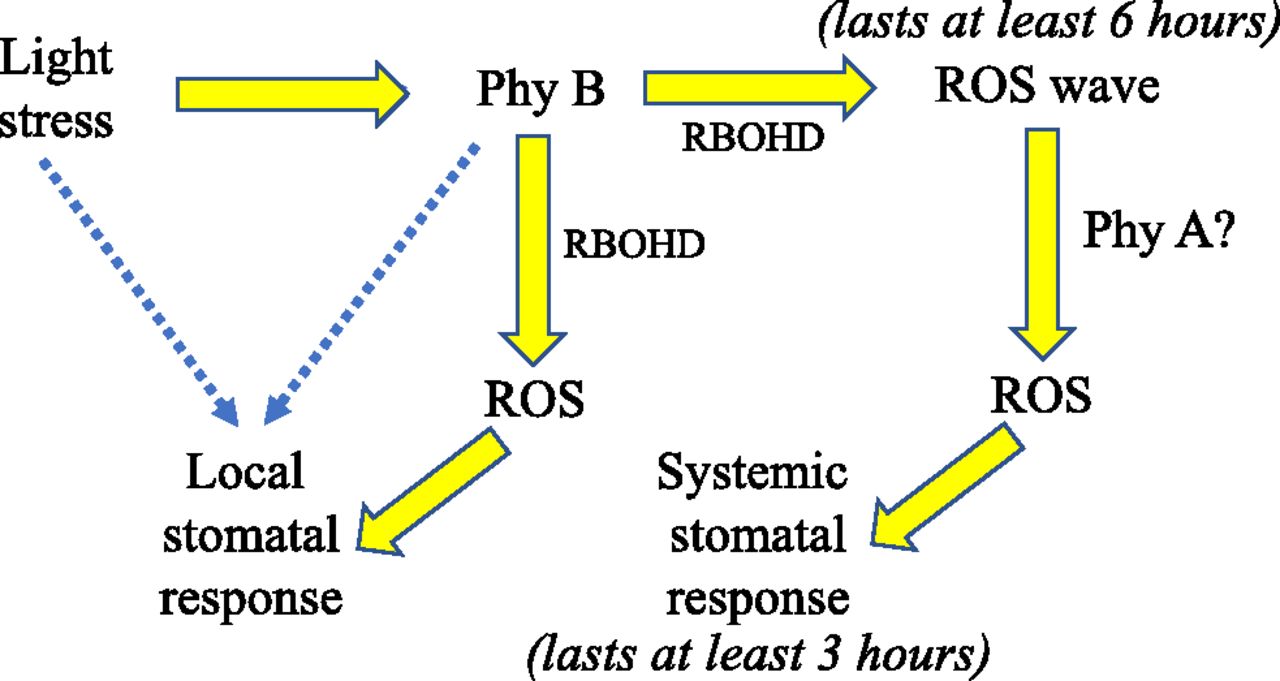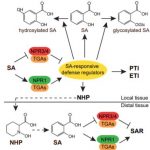On the Inside: Phytochrome B and Systemic Reactive Oxygen Species Waves

Several recent studies have revealed that reactive oxygen species (ROS)waves propagate through plants, originating at the treated, stimulated, or stressed local tissue and spreading within minutes to the entire plant. ROS waves regulate and coordinate systemic metabolic, molecular, and physiological responses among the different parts of the plant. Interestingly, in Arabidopsis (Arabidopsis thaliana), an excess light stress treatment with white light was found to cause a local and systemic stomatal aperture closure response that was mediated by the ROS wave. Whether this stomatal aperture closure response and its systemic coordination depend on phytochrome B (PhyB), and whether the initiation of the ROS wave itself involves PhyB, however, are unknown at present. Devireddy et al. (10.1104/pp.20.01084) now show that triggering of the ROS wave by a local excess light stress treatment results in the induction and maintenance of high levels of systemic ROS for up to 6 h. Despite these high systemic ROS levels, stomatal aperture size returns to control size within 3 h and the systemic stomatal response can be retriggered within 6 h. These findings suggest that the ROS wave triggers a systemic stress memory mechanism that lasts for 3 to 6 h but that, within 3 h of its activation, stomata become insensitive to ROS and open. The authors further show by studying phytochrome mutants that the excess light stress-triggered ROS wave, as well as the excess light stress triggered local and systemic stomatal aperture closure responses, are dependent on PhyB function. Systemic ROS signaling and stomatal aperture closure responses are suppressed in phyB mutants. These findings reveal a delicate interplay between excess light stress, PhyB, ROS production, and rapid systemic stomatal responses.



